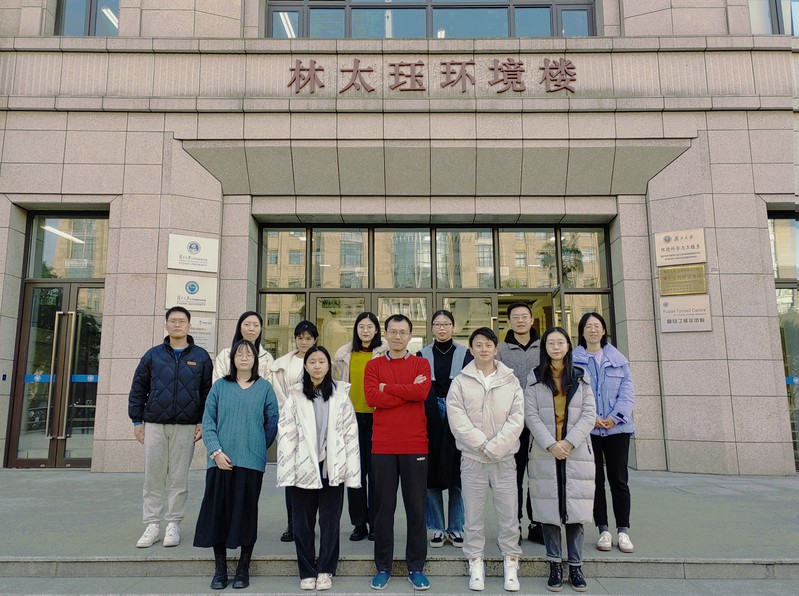They have already disappeared from Earth... These swamp plants have not yet been recognized by humans
Standing in the Momoge Wetland, one can see the sky as blue as a wash, while looking around, white cranes dance and a hundred birds gather. The swaying reed sea is full of vitality. The sunset by the sky gradually turns from brilliant to plain, peaceful and leisurely.
It's hard for tourists to imagine that the city of Baicheng in Jilin Province, where this wetland is located, has been known as the "800 mile vast sea" for many years. From the wild and rich swamps in history, to the degradation caused by human activities, and to the restoration of the lush greenery of wetlands through artificial protection, the changes in the Momoge Wetland are just a microcosm of many swamp wetlands in China.
China's wetland area ranks fourth in the world and first in Asia, with 42 types of wetlands classified by the Wetland Convention distributed throughout the country. On August 15th, China celebrated its first National Ecological Day. Nowadays, the concept of protecting natural ecosystems has deeply rooted in people's hearts.
Tourists take a boat tour in the water forest of Luyang Lake Wetland Park in Jiangdu District, Yangzhou City, Jiangsu Province. Shen Jizhong
Wetlands are known as the "kidneys of the Earth" and are one of the three major ecosystems in the world, along with forests and oceans. Meanwhile, wetlands are also the fastest degraded and lost ecosystem worldwide. What should we do to protect wetlands, the "kidney of the earth"?
In July this year, under the leadership of the Northeast Institute of Geography and Agroecology of the Chinese Academy of Sciences, the Everglade Annals of China, which has been studied for many years by hundreds of researchers from 12 institutions nationwide, was officially published. It summarizes and condenses the latest achievements in the field of swamp studies both domestically and internationally in recent years, clarifies the "background" of the main swamps in China, and provides strong scientific support for subsequent wetland protection, restoration, and comprehensive utilization work.
The story of wetlands and us may have just begun.
1
Release the latest research results
Unveiling the Mysterious Mask of the Swamp
Human scientific research on wetlands was relatively late - it was not until the 18th century that European countries began to investigate and study peat swamps; In 1885, Russian professors began teaching courses on swampy science in universities. However, research on swamps in China started even later. In 1958, Changchun Institute of Geography, Chinese Academy of Sciences, was established, which is one of the earliest institutions to study marshes in China. Since its establishment, the Northeast Institute of Geography has been dedicated to swamp research and published the Chinese Swamp Chronicle in 1999.

Now, it has been over 30 years since the last survey. Time has changed, and due to climate change and human activities, the distribution and structural functions of swamps in China have undergone significant changes.
"In China, swamps are the main type and core form of wetlands, and are one of the most diverse ecosystems and important living environments for organisms." said Jiang Ming, Director of the Northeast Institute of Geography and Director of the Wetland Ecology Professional Committee of the Chinese Society of Ecology.
After years of arduous investigation, researchers conducted a detailed investigation of swamps with an area of over 4 hectares, which almost covers all swamps in China. Opening this thick work, the scope and area, geological topography, climate, water resources and environment, swamp soil, swamp vegetation, swamp animals, threatened and protected management status of each swamp are all clear at a glance.
"The new version of 'China Swamp Chronicle' has unveiled the mysterious veil of swamps. From the results, we have seen both a joyful side and many worrying issues," Jiang Ming told Science and Technology Daily reporters.
Since the 18th National Congress of the Communist Party of China, China has launched a large number of wetland protection and restoration plans. The "Yangtze River Protection" and "High quality Development of the Yellow River Basin" have become national strategies, and the restoration and improvement of wetland ecosystem functions have received unprecedented attention and importance in China. At present, the trend of wetland degradation and disappearance in China has been effectively curbed, and biodiversity has been improved. In the Sanjiang National Nature Reserve, the population of the Oriental White Stork has entered a rapid recovery period, with the breeding population increasing from 8 in 2000 to 192 in 2021, returning to the level of its peak in the 1970s; In terms of plants, the restoration effect of mangrove forest area is significant, and the total area has basically recovered to the level of 1980.
The Tatou Grass Swamp in Sanjiang National Nature Reserve. Photographed by Jiang Ming
On the other hand, researchers have also observed worrying changes: the cumulative loss rate of swamp wetlands in the Three Rivers Plain of China is as high as 80%; Due to grazing and drainage, the organic carbon content of 81% of the peat swamps in the Ruoergai Plateau has decreased compared to data from the 1980s; Compared with the first survey results in 1999, the area of a swampy wetland in North China has significantly decreased by 99%
The widespread loss of swamp wetlands has resulted in a decline in hydrological regulation and carbon sequestration functions, as well as a decrease in biodiversity.
Taking plants as an example, some swamp plants such as salt birch and oriental water leek are already in an extinct and extremely dangerous state. "Some of the marsh plants have disappeared from the earth before they have been recognized by human beings and made contributions to human beings," Chen Yiyu, an academician of the CAS Member, wrote in the preface to the Annals of Marshes in China.
2
Joint Operations of Space, Sky, and Sky

Supporting wetland conservation decisions
Swamp wetlands are so important, but it is not easy to understand their "background".
Chinese researchers have used a combination of remote sensing satellites, drones, and ground survey teams to create a detailed electronic archive of 655 swamps across the country.
As a member of the ground forces, Liu Bo, a senior engineer at the Northeast Institute of Geography, is responsible for conducting detailed scientific investigations on the swamp, investigating the species diversity and biomass of the swamp vegetation.
When it comes to swamps, people will associate them with the hardships of the Red Army climbing snow capped mountains and crossing grasslands, and may also associate them with endless grasslands, making people marvel at the vastness of the ancient wilderness. "Some swamps have grass on top, water in the middle, and mud below. Some plots of land may be safe for people to stand on, but one or two steps away, they can cover people's heads," Liu Bo told reporters.
Dr. Zhang Kun from the Wetland College of Southwest Forestry University also has the same experience. Zhang Kun, who was responsible for the Sichuan region, set foot on the swamp that the Red Army had once set foot on - Ruoergai. "Our task was to obtain samples of water, plants, and peat. During this process, I myself had been trapped," Zhang Kun recalled. As the swamp slowly engulfed my feet and calves, a sense of powerlessness and fear quickly filled my heart. At this point, one needs the help of others to escape.
The team led by Yue Haitao from the Wetland College of Southwest Forestry University conducted a peat swamp survey in Ruoergai. Provided by Zhang Kun
After delving deep into the swamp, the sampling work has just begun. Researchers need to drill down and collect complete samples of swamp soil to bring back to the laboratory. "Due to the inability to bring large equipment, we had to manually obtain 9.9-meter-long peat columns in the Riganqiao Swamp in Hongyuan, Aba, Sichuan, which is equivalent to three floors high. When we returned to the safe point, everyone was so tired that they couldn't even lift their legs to get on the car," said Zhang Kun.
To save manpower and material resources, Liu Baojiang, a researcher at the Northeast Institute of Geography, is researching the use of ground penetrating radar equipment to detect peat resources. "Ground penetrating radar emits electromagnetic waves underground. When encountering the interface between peat and background soil, due to the different electromagnetic characteristics of peat and background soil, a portion of the electromagnetic waves will be reflected back. Then, we use our specialized software to analyze the data of the reflected radar waves, and extract information such as peat thickness and burial depth." He told reporters that this method can ensure detection accuracy and quickly obtain the distribution and storage of peat on a large area.
With the sample data retrieved from field investigations, the "eyes" in space - remote sensing satellites - are beginning to show their power. Researcher Mao Dehua from the Northeast Institute of Geography utilized these soil samples, combined with wetland distribution data, and utilized artificial intelligence learning algorithms to achieve spatial prediction of wetland soil organic carbon density, and accurately calculated wetland soil carbon storage. This result is extremely valuable - it can provide scientific basis for fulfilling the Wetlands Convention and global climate change negotiations, and help China achieve its "dual carbon" goals.
Huahu Scenic Area in Ruoergai Wetland National Nature Reserve. "After having an integrated monitoring system for air, space, and space, we can also monitor the plant growth and hydrological conditions of wetlands, which is equivalent to providing an early warning system for protected areas," said Mao Dehua.

Compared to the survey conducted over 30 years ago, the equipment of the researchers in this study is more sophisticated and the results are more accurate. "In addition, we have expanded the connotation and extension of the definition of swamp, gaining a deeper understanding of the hydrological conditions, peat characteristics, plant resources, and other aspects of swamp wetlands," said Jiang Ming.
3
"Endangered" Wetland Becomes a Migratory Bird Paradise
Harmonious coexistence between humans and nature
Everyone knows that the wetland ecological environment is fragile, so can wetlands restore their ecological functions under human intervention? Mao Dehua gave a positive answer through image data.
"From a national perspective, in the past decade or so, the area of wetlands in China has begun to increase, which is closely related to the country's continuous wetland protection work." Mao Dehua told reporters, "The rate of wetland loss is slowing down, the total area is increasing, and the population of indicator species such as mangroves is continuously expanding."
Entering the Minjiang River Estuary Wetland National Nature Reserve in Fujian Province, amidst the drizzling rain, black faced spoonbill can be seen dancing above the lush green wetland, Chinese crested terns chasing "heart birds" to feed fish, and black winged long footed sandpipers strolling in shallow waters.
Birds soar on the sea surface of the wetland at the mouth of the Minjiang River. Photo by Wei Peiquan, journalist from Xinhua News Agency
"This used to be my farm," wetland ranger Lin Fajin pointed out. Now the water and grass are abundant. With the implementation of wetland rehabilitation actions, Lin Fajin responded to the call and became the first retired household in Kefeng Village, Tantou Town, Changle District, Fuzhou City. For over 20 years, Fuzhou has suspended unreasonable projects, set control red lines, and launched a series of protection and governance measures, achieving a butterfly transformation of ecological "lost land" back to wetlands, making wetlands that were once increasingly degraded and "endangered" become a paradise for migratory birds.
With the comprehensive promotion of ecological civilization construction, many wetlands have regained vitality. Compared with the previous survey results, the area of the Dabusu Lake marsh located in Qian'an County, Songyuan City, Jilin Province has expanded by about 1.9 times; Wetlands such as Momog and Xianghai have become happy homes for migratory birds on their migration routes.
"On the premise of protecting the ecological environment, we should carry out reasonable agricultural utilization of wetlands, and form a modern agricultural production structure and regional layout that is compatible with market demand and resource and environmental carrying capacity, which will play a positive role in improving the diversity and output of carbohydrate and protein supply." said Dr. Wen Bolong, director of Northeast Institute of Geography and the Chinese Academy of Sciences Songnen Plain West Saline Wetland Ecological Research Station.

The rational utilization of wetlands is the core concept of the Wetland Convention, and it is also the continuation and sustainable support of wetland protection work.
The Chinese climbing sparrow is raising its chicks in the coastal wetlands of Fengnan District, Tangshan City, Hebei Province. Photo by Yang Shiyao, journalist from Xinhua News Agency
Driving towards the southeast direction of Baicheng City, Jilin Province, the appearance of the Niuxin Taobao National Wetland Park, with lush reeds and abundant gulls, is eye-catching. Unlike the exposed white saline alkali land around, green is the main color tone of Niuxintao National Wetland Park.
The Chinese Academy of Sciences Songnen Plain Western Saline Wetland Ecological Research Station is built here. Wen Bolong studied under Liu Xingtu, a wetland ecologist and academician of the CAE Member. In 2002, Liu Xingtu led a team to Niuxin Taobao for research and found that the local ecology was fragile, wetland degradation was severe, and the economic development of surrounding communities was lagging behind. In order to restore the wetland ecosystem and improve the quality of life of residents, Liu Xingtu led a team to take root here, striving to explore a sustainable development model for wetlands in the western part of Songnen Pingyuan.
Based on the actual situation in the local area, researchers have developed targeted technologies for the restoration and high-yield cultivation of soda salt alkali reed wetlands, revealing the key water requirements for reed growth. They have established hydrological control measures for degraded soda salt alkali reed wetlands and a rapid restoration technology system for alkali spot reed.
To further achieve the sustainability of wetland restoration projects and leverage the product supply function of wetlands, Liu Xingtu and his team pioneered the soda saline alkali wetland reed crab rice composite ecological model. Through the continuous efforts of several generations of researchers, the technical system for the restoration and rational utilization of saline alkali wetlands has been continuously improved.
At present, in the Niuxintao moisturizing area, reeds, lotus seeds, rice ears, schools of fish, river crabs, and waterfowl form a harmonious symbiotic scene. Wen Bolong told reporters that through the rational utilization of wetlands, the protection capacity of wetlands has been enhanced, the hydrological characteristics of wetlands have been stably maintained, the salinity of water and soil has decreased, vegetation coverage and biomass have increased, biodiversity has increased, and in addition to economic and social benefits, ecological benefits have also significantly improved.
four
Accurate policy implementation
Boosting wetland protection work to a higher level
Wetland conservation is a challenging issue on a global scale. China is one of the countries with the largest wetland area in the world, with vast territory, diverse landforms, complex geographical environment, diverse climate conditions, and widespread distribution of wetland resources with significant regional differences.

"This means that our protection of wetlands must be based on science, targeting different regions and types of wetlands, implementing targeted policies, and developing 'Chinese remedies' for wetland protection," said Jiang Ming.
Only by identifying the pathology can we prescribe the right medicine.
For swamps, human activities are one of the biggest interfering factors, and the most typical one is peat swamps. Peat, also known as peat or peat, is a special organic substance formed by incomplete decomposition and accumulation of swamp plants over thousands of years, and can be regarded as the original form of coal. Peat swamps are the most typical and important wetland type, with the largest carbon storage per unit area and a carbon density that is 3-6 times the global average soil carbon density. They are one of the most important carbon sinks in slowing down the rise of atmospheric carbon dioxide concentration globally.
The Ma Muyuan team from the Institute of Wetlands, Chinese Academy of Forestry, conducted a peat resource survey in Maqu, Gansu and collected peat profile specimens. Photo by Ma Muyuan
At present, there is still the phenomenon of illegal peat mining in China, which not only leads to a decrease in peat quality and resource waste, but also leaves many mines, posing hidden dangers for subsequent land consolidation and reclamation. The reason for illegal harvesting is actually only as a substrate for planting crops.
"There is a typical vegetation called peat moss in peat swamps, which is highly valuable in carbon sequestration, filtering fresh water, and regulating floods. It is widely used in healthcare, pollution monitoring, and horticulture industries." Liu Bo said, "However, peat moss grows slowly, accumulating only about 20 grams of dry matter per square meter per year, which can only increase the thickness of peatland by 1 millimeter. Therefore, it is easy to damage and difficult to recover."
Regarding the protection of peat swamps, Article 35 of the Wetland Protection Law of the People's Republic of China stipulates that the local people's government at or above the county level where peat swamps are located shall formulate a special plan for the protection of peat swamps and take effective measures to protect them; Peat swamp wetlands that meet the standards for important wetlands should be included in the list of important wetlands; Prohibit the extraction of peat or unauthorized extraction of groundwater in peat swamp wetlands; It is prohibited to discharge peat swamp wetlands for water storage, except for those necessary for disaster prevention and reduction.
At the beginning of this year, the Public Security Bureau of Aba Prefecture in Sichuan Province announced typical cases of cracking down on the illegal excavation of peat. Thirteen people in three cases have been held criminally responsible for illegal excavation of peat in accordance with the law.
In June, the Supreme People's Procuratorate held a special seminar on wetland protection public interest litigation in Aba Tibetan and Qiang Autonomous Prefecture, Sichuan Province, and released a number of typical cases of wetland protection public interest litigation, including the Sichuan Provincial Procuratorate's supervision of the protection of the Ruoergai alpine peat swamp wetland case.
Based on the survey results, researchers have also proposed measures to protect peat resources, including scientifically defining the boundaries of peat protection and development, strengthening the research and development of peat substitute products, and strengthening basic research on peat.
The red crowned crane in Zhalong National Nature Reserve. Photographed by Jiang Ming

In addition to human activities, climate is also considered an important factor in disrupting wetlands. "Extreme drought or short-term heavy rainfall can cause significant pressure on wetlands," Xue Zhenshan, associate researcher at the Northeast Institute of Geography, told reporters. The impact of abundant water on plant growth and carbon sequestration capacity needs to be further explored by scientists.
The protection of the ecosystem is related to the sustainable development of the Chinese nation. In Jiang Ming's view, there are still many cognitive gaps that need to be filled around wetlands.
The reporter noticed that in the new version of "Chinese Swamp Chronicle", researchers divided the country into 5 swamp distribution areas and 17 swamp areas, and did not divide them according to traditional administrative units. "Wetlands are a whole, and in order to effectively protect the typical wetland ecosystem of the Songnen Plain as a whole, it is urgent to break the original territorial pattern of protected areas and establish cross basin and comprehensive national parks," said Jiang Ming.
In addition, with the deepening of wetland protection work, the demand for professional talents is becoming more urgent. Jiang Ming told reporters that relatively speaking, the discipline construction of wetlands is still relatively weak, with a late start and low discipline maturity. It was not until last year that the Wetland College of Southwest Forestry University began admitting the first batch of undergraduate students majoring in wetland protection.
"We hope to build a national level platform as soon as possible, attract more talents to participate in wetland scientific research, condense scientific research directions, gather scientific research forces, and lay a solid foundation for the protection work to a higher level while promoting the development of the discipline." Jiang Ming said.




